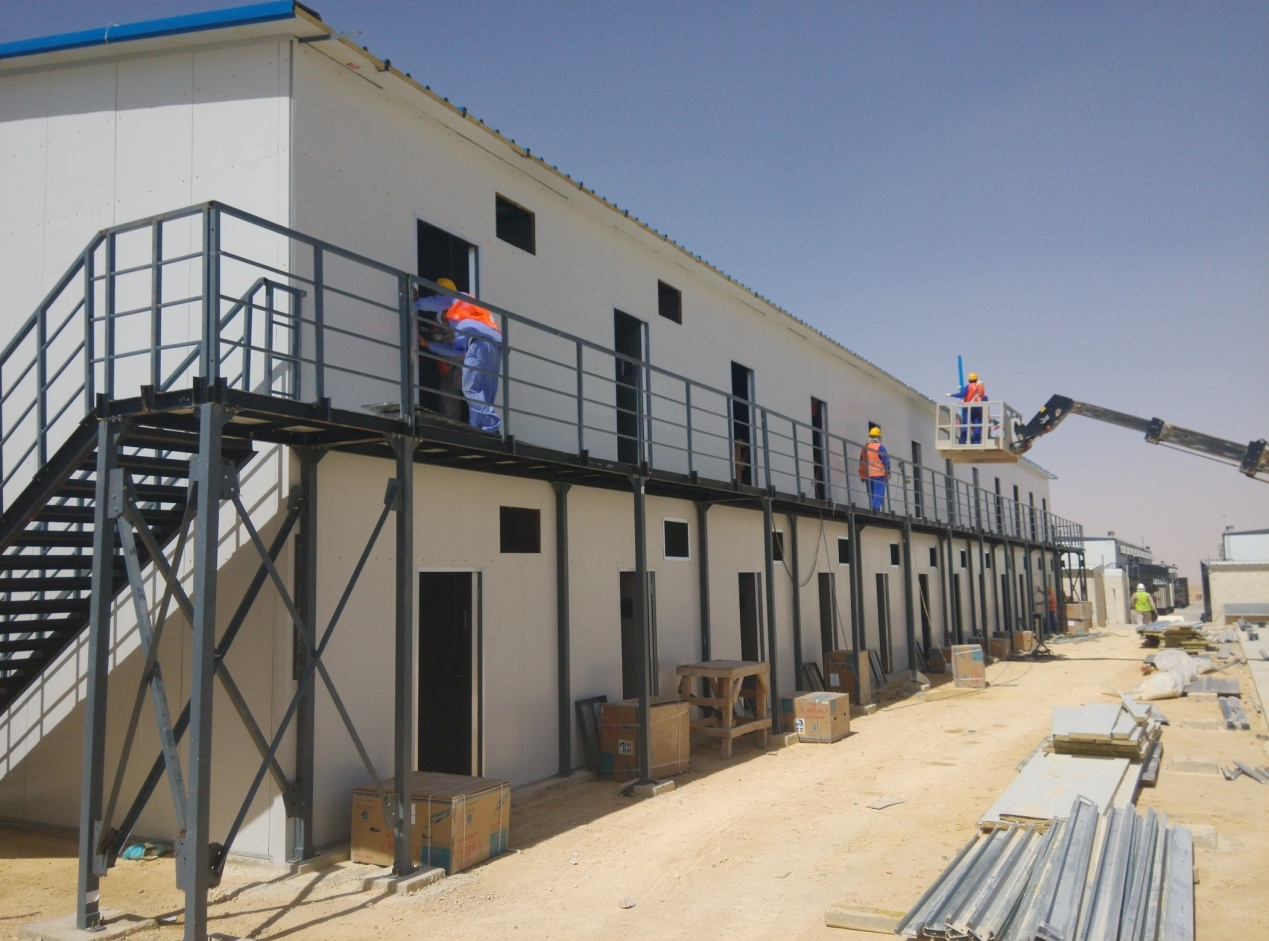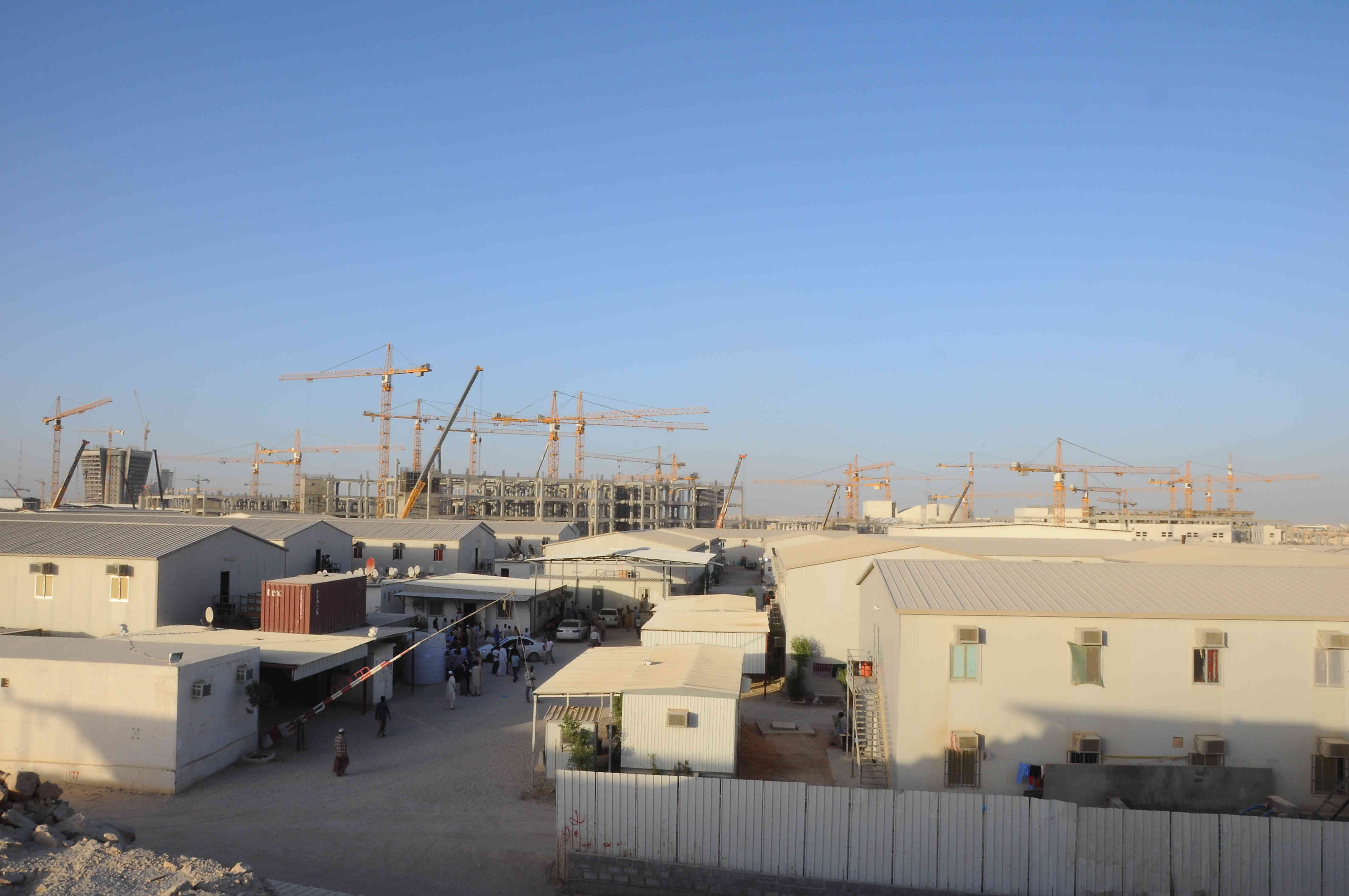Tel: 0086-532-88966982
0086-532-88965892
Website: www.lidajituan.com
E-mail: sales@lidajituan.com
Head office: 5th Floor, Building A, Darron Center, 180 Haier Road, Qingdao, 266000, China
Why Global Mining Giants Choose Prefabricated House Solutions Over Traditional Constructions
Classification:Industry News
Release time:2025-07-07 17:00
Why Global Mining Giants Choose Prefabricated House Solutions Over Traditional Constructions
When Rio Tinto needed to mobilize 3,000 workers for its Oyu Tolgoi underground expansion in Mongolia’s Gobi Desert, conventional construction would have delayed first copper production by 18 months. Instead, they deployed a prefabricated camp from Lida Group – mobilizing crews 60% faster while slashing capital costs by $120M. This decision reflects a fundamental shift: 83% of Tier 1 miners now mandate prefab house solutions for greenfield projects. The era of poured-concrete camps is over. Here's why engineered modular houses dominate modern mining operations.
The Perfect Storm: Mining's Construction Crisis
Mining faces unprecedented pressures making traditional builds untenable:
- Capital Discipline: Investors demand sub-15-month payback periods
- Labor Inflation: Remote site construction labor costs up 37% since 2020
- ESG Ultimatums: Scope 3 emissions must drop 50% by 2030
- Social License Pressures: Local employment quotas require immediate housing
- Orebody Access Timelines: High-grade zones degrade during construction delays
Traditional approaches crumble under these demands. Consider the breakdown:
Engineering Solutions: The Prefab Building Revolution
Lida Group's prefabricated house systems attack these problems through precision industrialization:
1. Factory-Parallelized Timelines
While site teams install foundations, climate-controlled factories simultaneously assemble complete volumetric modules. BHP reduced its South Flank camp construction from 22 months to 9 using this parallel approach – unlocking iron ore revenues 13 months early.
2. Logistics Transformation
Flat-pack components maximize shipping density:
- 52% more units per convoy vs. traditional modules
- 37% fewer customs clearance events
- Components fit narrow access roads (2.1m width clearance)
At Codelco's Quebrada Blanca Phase 2, optimized transport avoided 1,200 truck trips – saving $7.2M in fuel and reducing carbon emissions by 2,800 tons CO2e.
3. Integrated Quality Control
Factory processes eliminate on-site defects:
- CNC welding robots achieve 99.8% dimensional accuracy
- Pressure-tested plumbing in climate-controlled bays
- Thermal imaging verifying insulation integrity
Anglo American's Grosvenor camp achieved zero rework – a first in their Australian operations.

The Financial Equation: TCO Dominance
Prefab building solutions deliver 42% lower total cost of ownership over 10 years:
Source: Wood Mackenzie Mining Facilities Benchmark 2024
Beyond Cost: Strategic Advantages
1. Talent Warfare Resolution
Glencore increased Ghanaian technician retention by 32% using Lida's premium modular houses featuring:
- Noise-reduced sleeping pods (35dB max)
- Individual climate control zones
- High-speed Starlink connectivity
- Air quality monitoring systems
2. Decarbonization Pathway
BHP achieved Scope 3 targets at Jansen Potash using:
- Solar-integrated roofing (35% energy offset)
- Thermal bridging elimination (U-value 0.15 W/m²K)
- Low-carbon steel structural frames
Resulting in 11,000-ton annual CO2 reduction versus concrete builds.
3. Social License Engineering
Newmont's Ahafo North expansion used local content integration:
- 73% of modules assembled in Ghanaian factories
- Site-ready foundations by community crews
- Redeployment guarantees to future Ghana projects
Approval accelerated by 14 months versus imported structures.
Case Study: Cortez Hills Acceleration
Challenge: Barrick Gold needed 400 beds operational in 7 months amidst Nevada's labor shortage.
Traditional Approach:
- Concrete foundations: 14 weeks
- Structural steel erection: 18 weeks
- Trades coordination: 22 weeks
→ Projected completion: 13 months (missed deadline)
Lida Group Solution:
- Factory manufactured 86 modules concurrently with site work
- Pre-installed MEP reduced on-site labor by 400,000 hours
- Optimized transport via rail spur delivery
Result: Camp operational in 6.5 months – enabling early gold production worth $2.1M/week.

Engineering Differentiation: Why Miners Specify Lida
The prefab house market has commoditized players. Lida dominates Tier 1 projects through:
Mining-Specific Engineering
- Haul truck vibration dampening systems
- Dust-proof HVAC (MERV 16 filtration)
- Underground blast-resistant designs
Hybrid Deployment Models
- Volumetric modules for accommodation hubs
- Flat-pack prefab building systems for ultra-remote infrastructure
- Containerized process plants with structural upgrades
Lifecycle Digital Twins
- IoT sensors monitoring foundation settlement
- Corrosion tracking in real-time
- Predictive maintenance algorithms
The Operational Payoff
Miners deploying engineered prefabricated house solutions report:
- 24% faster production ramp-up
- 19% lower all-in sustaining costs (AISC)
- 38% reduction in safety incidents vs. construction camps
- 8.7% higher mineral recovery from earlier ore access
Conclusion: The New Mine Development Calculus
For global miners, the choice between traditional builds and modular houses is no longer about cost alone. It’s about:
- Capital velocity in an era of shareholder activism
- ESG compliance amidst decarbonization mandates
- Talent sustainability in hypercompetitive markets
- Social license in increasingly assertive host communities
Lida Group's engineered approach transforms camps from capital sinks to strategic accelerators. By collapsing construction timelines, eliminating onsite variability, and embedding ESG performance into module DNA, they deliver what poured concrete never can: certainty.
When your orebody promises $800M/year in EBITDA, "standard" construction becomes the most expensive option. The industry's shift to prefabrication isn't trend adoption—it's balance sheet discipline engineered in steel. Miners who build tomorrow's camps with yesterday's methods will founder. Those specifying Lida's solutions will define the next era of profitable resource extraction.
oil and gas,mining,prefab house,constructions
Contact Us
Head Office: 5th Floor,Building A,Darron Center,No.180,Haier Road,Qingdao, 266000,China
Tel: 0086-532-88966982 88965892 Fax:0086-532-88965571
WhatsApp:+86 13793209022
Mobile/Wechat:+86-15166671720
Email: sales@lidajituan.com Website: www.lidajituan.com
Alternate Website: www.lidamodularhouse.com
Head Office: 5th Floor,Building A,Darron Center,No.180,Haier
Road,Qingdao, 266000,China
Tel: 0086-532-88966982 88965892
Fax:0086-532-88965571
Email: sales@lidajituan.com
Website: www.lidajituan.com
Alternate Websit: www.prefabhousecn.com
Wechat/WhatsApp:+86-13793209022
Copyright(c)2023 All Rights Reserved SEO Business license

